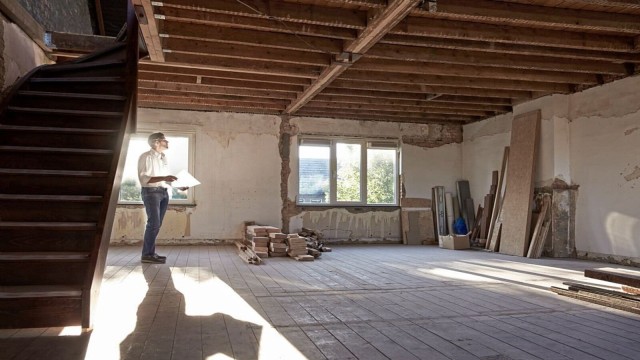Read next
The latest news, updates and expert views for ambitious, high-achieving and purpose-driven homeowners and property entrepreneurs.


One of the most common questions we hear is: “How long does it actually take to get planning permission in London?”
It sounds like a simple question — but the answer isn’t always straightforward.
In theory, most planning applications should be decided within eight weeks, or thirteen weeks for larger or more complex proposals. In practice, though, things often take longer.
Let’s break down the typical planning application timeline — and what really happens at each stage.
The English planning permission timeline is typically as follows:
However, in practice, these targets are often missed. According to the Planning on Empty report prepared by the Home Builders Federation (February 2025), just 19% of major planning applications were decided within the 13-week target timeframe between July 2022 and June 2024. Alarmingly, one in three local authorities failed to determine a single major application within that statutory deadline.
What this means for applicants is that the statutory clock doesn’t always reflect the reality on the ground, particularly in areas with high demand or planning departments suffering from significant under-resourcing.
Applications are assessed in two parts, externally and internally. Both parts of the planning permission process should take up to four weeks each, beginning with the external discussion.
The external discussion allows your application to be seen by individuals or companies, such as your neighbours and utility companies. They can add comments and either approve or complain about your application, which may or may not be taken into account by the planning officer.
The second part is where your application is viewed internally by a planning officer. The officer will research the area and how the development will fit in, alongside the external comments.
They will also have meetings with other planning officers for additional comments on the project. The planning officer will then go over the application again with the research and comments to make a decision on the application.
The decision will be either allowed or refused.
If your application is allowed, then all is well! You officially have permission to make a start on your project.
If your application is refused, and you do not agree with the reasons for refusal, you can submit an appeal which will then be assessed by the Planning Inspectorate.
Planning appeals have no fixed deadline but generally take around six months. The Planning Inspectorate is separate from all local planning authorities and will check your application thoroughly to decide if the planning officer’s decision is reasonable or unreasonable.
Different timescales apply where the development is also the subject of an enforcement notice.
If an enforcement notice has been served within two years of the application being submitted or is served before the time period for determining the application has expired, the time limit to appeal is within 28 days of the determination date.
If an enforcement notice is served after the application’s date for determination, the time limit is 28 days from the enforcement notice served date, unless this would extend the period beyond the usual time limit for cases not involving an enforcement notice
A word of caution: DO NOT commence the development proposed before you get planning permission otherwise you may need to apply for planning permission retrospectively.
It is also important to note that applications for approval under the Building Regulations are dealt with separately from applications for planning permission, and the passing of plans under the Building Regulations in no way implies approval under the planning act.
The planning permission process is meant to follow set timescales, but in reality, delays are common.
While some factors are out of your control, there are proactive steps you can take to minimise the risk of setbacks and help ensure your application moves through the system as smoothly as possible.
Here are some of the most common causes of delays, along with practical steps to avoid them - helping you understand how to get planning permission quickly and streamline the approval process.
One of the biggest causes of delays is objections from neighbours, local organisations, or other stakeholders who may be affected by your development.
These objections can trigger additional scrutiny, require further negotiations, and, in some cases, lead to the involvement of a planning committee rather than a straightforward officer decision, which can extend the timeline significantly.
To reduce the risk of objections, it’s important to engage with your neighbours before submitting your application. Let them know about your plans, listen to any concerns they might have, and address potential issues early on.
If your project could impact a conservation area, listed building, or involve a significant change to the streetscape, you may also want to consult with local interest groups to gauge their reactions.
A well-handled consultation process can prevent objections from being lodged in the first place, ultimately helping your application move forward without unnecessary delays.
One of the easiest ways to slow down the planning process is by submitting an application with missing or incorrect information.
Local planning authorities are required to request additional details if something is missing, which often results in delays of several weeks.
In some cases, an incomplete application can even be rejected outright, forcing you to start the process again.
To avoid this, double-check all required documentation before submitting your application.
This includes architectural drawings, planning statements, design and access statements (if required), and any specialist reports such as transport assessments, heritage impact assessments, or ecology reports.
Ensuring that your plans align with local and national planning policies can also prevent unnecessary back-and-forth discussions.
If you're unsure about what is required, speaking with a planning consultant or checking your local authority’s validation checklist can help ensure you have everything in place before submission.
Local planning departments across England are under immense strain, facing chronic staff shortages and rising workloads, both of which significantly slow the decision-making process.
Let’s take a look at the numbers. According to the Planning on Empty report we mentioned earlier, 80% of councils are operating below full staffing capacity, with a national shortfall of over 2,200 planners. The government’s proposal to fund just 300 junior officers addresses less than 15% of this gap.
Worse still, the same report estimates that to meet housing delivery targets, councils would need to recruit over 7,500 full-time equivalent planners, more than 25 times the current commitment.
Some councils, including Waverley, Cheltenham, and Castlepoint, saw planner turnover exceed 30% in a single year. Many are plugging gaps with expensive agency staff, spending upwards of £60 million annually, money that could otherwise fund thousands of permanent roles.
Like many of our peers, we’ve seen planning applications stuck in validation for weeks or even months, or held up because no case officer was assigned.
But it’s not just internal council resourcing. Applications often stall waiting for input from statutory consultees like the Environment Agency, Historic England, or local Highways teams. These bodies are also overstretched, and their responses can take weeks, adding uncertainty for applicants and slowing things further.
Another major issue is the widespread use of ‘extensions of time’ agreements, where councils pause the planning clock to avoid breaching statutory deadlines. While these extensions may seem harmless, they often mask serious underperformance. In some authorities, over 80% of applications now exceed target timelines (RIBA Journal, 2023).
In London, the pressure is particularly acute. Applications that would be routine elsewhere can face major delays due to added policy layers, conservation areas, strategic views, height limits, and density rules. Even well-prepared schemes can get caught in internal referral chains or overloaded planning committees.
While most of these factors are beyond your control, you can still improve your chances of a smoother process. Submit a clear, well-structured application with all required supporting documents - this can help avoid delays caused by clarification requests. And if your application is particularly complex or time-sensitive, consider paying for a fast-track or priority service if your council offers one.
Sometimes, planning officers may request changes to your proposal before they are willing to approve it.
This can be due to concerns about design, scale, materials, or potential impacts on neighbouring properties.
While these requests are not always avoidable, how you respond to them can make a big difference in how long your application takes.
If amendments are suggested, try to remain flexible and open to negotiation.
If changes are minor and would not compromise your project significantly, agreeing to them quickly can prevent the need for a formal planning committee review, which would add weeks or even months to the timeline.
However, if the suggested changes are unreasonable, you can push back - just be sure to provide clear, evidence-based arguments to support your original proposal.
While some homeowners and developers choose to submit planning applications on their own, working with experienced professionals can often save time and reduce stress.
Experienced planning consultants, architects, and other specialists understand local policies, potential pitfalls, and how to present applications in the most effective way.
An experienced architect can ensure your design meets planning policies while still achieving your vision, reducing the likelihood of objections or refusals.
A planning consultant can help navigate complex regulations and liaise with the council on your behalf, making the process smoother.
In cases where additional reports are required - such as environmental, transport, or heritage assessments - specialist consultants can provide expert input that strengthens your application.
While hiring professionals does come at an additional cost, their expertise can increase your chances of approval, reduce the risk of delays, and ultimately save time and money in the long run.
That brings us to the end of today’s article, analysing what influences the planning application processing time in London and across the country.
Urbanist Architecture is a London-based RIBA chartered architecture and planning practice based in Greenwich.
With a dedicated focus in proven design and planning strategies, and expertise in residential extensions, conversions and new build homes, we help homeowners to create somewhere they enjoy living in and landowners and developers achieve ROI-focused results.
If you want to win the planning permission you need without worrying about being rejected - our team has a 97% success rate after all - please contact us. We'd be happy to help.

Nicole I. Guler BA(Hons), MSc, MRTPI is a chartered town planner and director who leads our planning team. She specialises in complex projects — from listed buildings to urban sites and Green Belt plots — and has a strong track record of success at planning appeals.
We look forward to learning how we can help you. Simply fill in the form below and someone on our team will respond to you at the earliest opportunity.
The latest news, updates and expert views for ambitious, high-achieving and purpose-driven homeowners and property entrepreneurs.
The latest news, updates and expert views for ambitious, high-achieving and purpose-driven homeowners and property entrepreneurs.










We specialise in crafting creative design and planning strategies to unlock the hidden potential of developments, secure planning permission and deliver imaginative projects on tricky sites
Write us a message